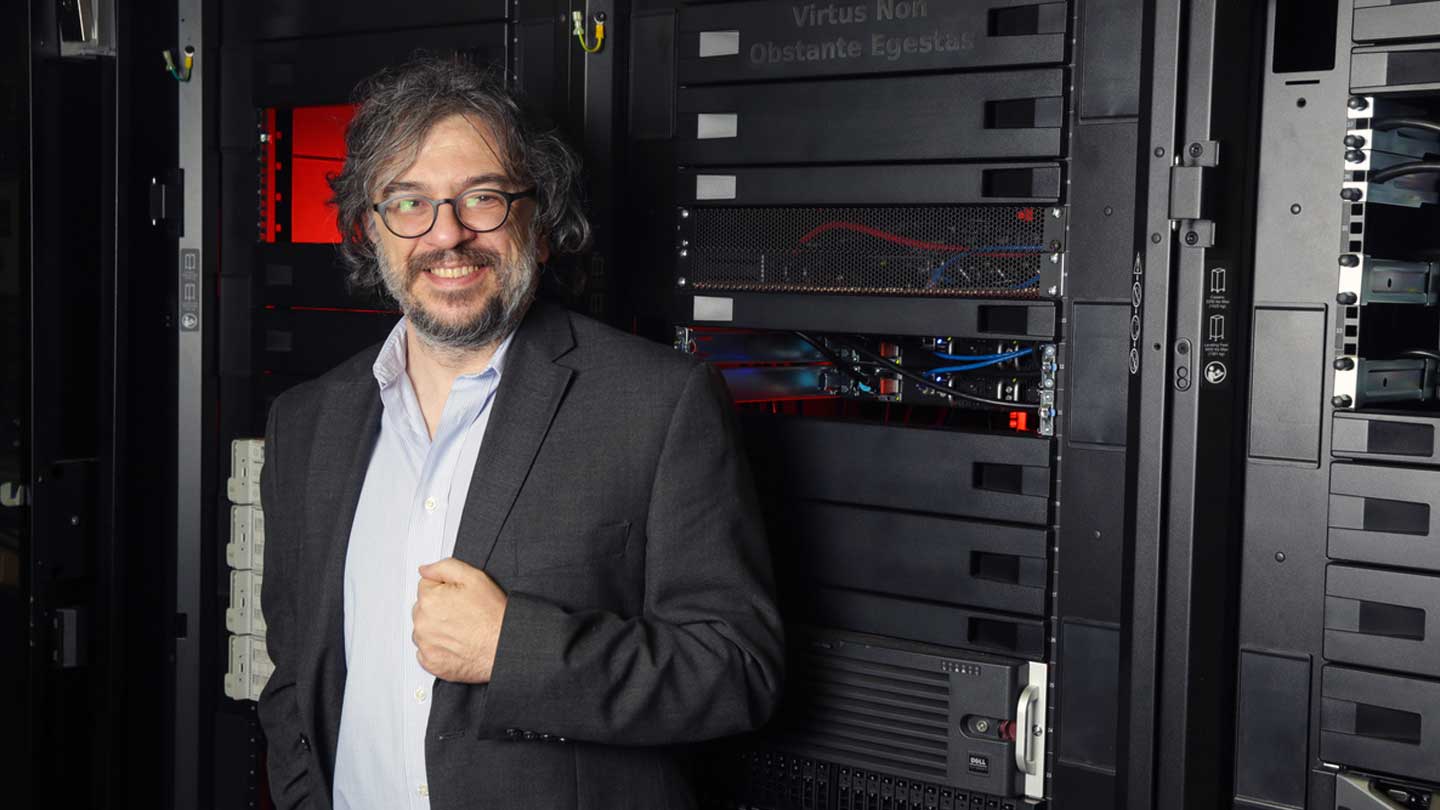
Dr. Baudry's research was recently awarded one of five 2020 Hyperion HPC Innovation Excellence Awards recognizing noteworthy achievements by users of high-performance computing.
Michael Mercier | UAH
There are promising new laboratory results in an award-winning effort to find naturally occurring compounds that are therapeutic against the COVID-19 virus.
So far, 35 of 125 naturally occurring compounds identified computationally at The University of Alabama in Huntsville (UAH) to have potential against COVID-19 that have shown computational efficacy are undergoing first-batch testing at the University of Tennessee Health Science Center’s Regional Biocontainment Laboratory (UTHSC RBL) that’s the next step in the process to becoming a drug.
The 125 candidate compounds were discovered in award-winning computational research by the lab of Dr. Jerome Baudry, the Mrs. Pei-Ling Chan Chair in the Department of Biological Sciences at UAH, a part of the University of Alabama System.
In a partnership between the Baudry Lab and Hewlett Packard Enterprise (HPE), the HPE Cray Sentinel supercomputer was employed to winnow the 125 candidates from an initial batch of 50,000 prospective naturally occurring compounds.
"There is very good news on vaccine developments, and it is great, but it is important that we continue working on other pharmaceuticals," Dr. Baudry says. "It's a bit like for the flu, where there are vaccines and there are pharmaceuticals, and they work together, not against each other. And what we learned here will be priceless to respond to other similar crises, if and when they show up in the future."
The computational research relied on some data produced by the Oak Ridge National Laboratory (ORNL), which leads an international effort to find therapeutic drugs to fight COVID. The Baudry Lab is involved in those efforts, as well.
"We used some of the ORNL-produced data, and we basically added value to it," Dr. Baudry says. "Although it is unique in many ways – our focus on natural products, for instance – it is important to note that this project of ours is still integrated into the national COVID-19 research effort."
In Memphis, the biosafety level 3 rated UTHSC RBL directed by Dr. Colleen Jonsson is testing the candidate compounds for the capacity of the chemicals to kill the virus and/or prevent cell infections, Dr. Baudry says.
"They use live virus infections of living cells grown in the equivalent of Petri dishes," he says. "The chemicals that will have a good profile can then be tested in animal models using mice."
This first group will be tested by the RBL collaborators in several doses and assays to ensure statistical accuracy, Dr. Baudry says.
"Those chemicals that do well, if any, will be moved to being tested in animal models," he says. "If we do not have enough promising test results, we can go to the next batch of chemicals that were predicted computationally to be of interest."
Dr. Baudry's research was recently awarded one of five 2020 Hyperion HPC Innovation Excellence Awards from 62 nominations. The award recognizes noteworthy achievements by users of high-performance computing (HPC) including simulation, AI and other advanced analytics, quantum computing and other methods and technologies. Winners were selected by independent judges primarily based on the demonstrated or projected impact of the innovation on science or engineering.
"Hyperion, the award sponsor, is the most respected group of industry experts in HPC," says Dr. Baudry. "I was very surprised about the award because I didn't even know that we had been under consideration."
Nominations come from the HPC industry, so even being nominated is a sign of recognition, he says.
"I was both very happy and very humbled. It sounds cheesy, but it's true," Dr. Baudry says.
"I have received awards and accolades before, but it is certainly the most important recognition of my career so far, because it recognizes a team rather than an individual. And so, it is not only the results we obtained that were recognized, but how they were obtained: in a collaborative and multidisciplinary project that involved science, communication, biology, physics, chemistry and, of course, supercomputers."
Presented as part of the 2020 International Conference for High Performance Computing, Networking, Storage and Analysis, the awards recognize HPC-enabled innovations in science, engineering, and data analytics, including both public sector advances in science and public or private sector returns on investment. They showcase HPC accomplishments in various environments such as traditional HPC centers, enterprise data centers and cloud computing platforms, as well as quantum computing. Dr. Baudry says the high degree of professional cooperation in the fight against COVID is notable.
"As terrible as this Covid19 crisis is, how we all came together in research has been incredible," he says. "In my nearly 25 years of performing and leading scientific research, I have never experienced anything like that."
The effort is unique for its level of collaboration, he says.
"There are no competitors, only collaborators, and a unique feeling of purpose that is absolutely wonderful," Dr. Baudry says.
"This may be the most important experience of my professional life. It reminded me of what I read happened during the space exploration of the '60s. There is nothing we cannot do when we work together."